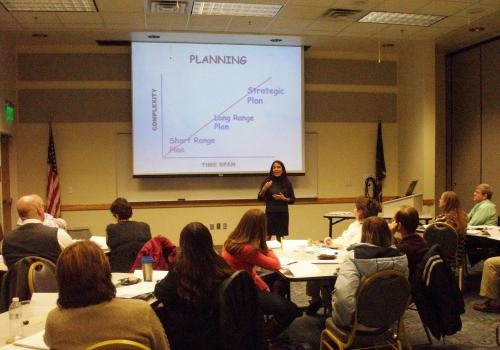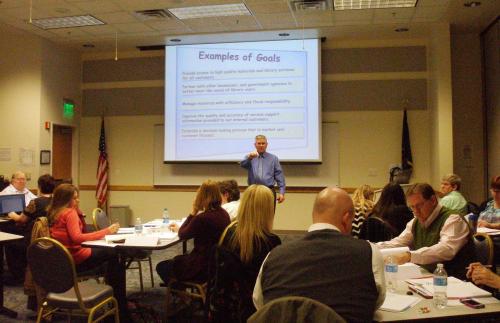I want to preface this post with a disclaimer: Though I spent 2 years in charge of a school library in the early days of my career, I make no claim to any special expertise in children’s services or school media centers beyond the general knowledge I have gleaned during my time in the library profession. In addition I do like to ‘stay in my lane’ and, as a result, have rarely if ever weighed in on issues specific to school libraries. When I began reading about the Makers Movement in school libraries, I left the issue alone as it was outside my wheelhouse. However, as this picks up momentum nation-wide it will come to affect us all in time, not just as public libraries but also as a society looking to an educational system to develop our next generation.
I have previously mentioned that I was slow to embrace the Makers Movement shift in public libraries. It simply didn’t speak to me right away; so I was a bit of a hard sell. I believe libraries, while we continue to innovate, must make decisions based on the ‘long-haul’ from a position that respects public trust and our over-arching missions that withstand the tests of time. It is human nature to jump on the new exciting thing. However, I have been completely convinced that these programmatic spaces and innovative offerings in public libraries are an exciting component of lifelong learning and essential to bridging the digital divide just as books were in the early 20th century.
So as much as I am a proponent of Makers Spaces in public libraries, this same movement in school libraries is worrisome. Is the school library really the appropriate home for a ‘makers space’ (3D Printer, sound studios, sewing machines, etc)? I may be working from an old model- let’s admit- it’s been awhile since I was in elementary or high school. But wouldn’t the 3D printer be more logical placed in the computer science department or the Technology/Computer Lab? And the sound studio in the Music Department? And the sewing machine….what happened to Home Economics?
If you do agree that the school library should embrace the ‘movement’, then comes the question of “To what degree?”. Where is balance in a school library setting between reader advisory, digital literacy, bibliographic instruction, etc and the cutting edge technology we are seeing in Makers Spaces in public libraries? In at least one school district in Kansas it appears the scales are far from balanced and it has many worried:
School libraries shift toward innovation areas, but librarians fear for what’s lost,
by Rick Montgomery of the Kansas City Star June 24, 2016
(Edited for brevity- follow link for complete article)
Librarians in the Shawnee Mission School District are making way for “the maker movement,” and some worry where that story is going… at least four Shawnee Mission grade schools have hired “innovation specialists” to run their libraries when fall classes open.
That’s the language of the maker movement, which seeks to convert once-quiet school spaces — usually in the libraries — into hands-on laboratories of creation and computer-assisted innovation….In fact, the word “librarian” didn’t come up in the job description for an innovation specialist at Merriam Park Elementary. “Stories” wasn’t there, either. No mention of “books,” “literature” nor “shelves.”
[Jan] Bombeck [of Ray Marsh Elementary] said. “It’s like they’re avoiding people with library certification.”
District administrators say that’s not the case. They do acknowledge, however, that grade schools haven’t much need any more for the libraries of 20 years ago — when they stocked books, gave research help, suggested age-appropriate literature and provided a cozy corner in which kids could turn pages.
Wow…Really? That is quite a statement “haven’t much need any more for the libraries of 20 years ago”…so no middle ground? School libraries must either be an arcane model or makers space?
Today all Shawnee Mission pupils are issued an electronic tablet or MacBook, providing them many times the information once squeezed on library shelves.“Now that they have those digital resources in hand, no longer do I have to get up and walk my class to the library,” said Michelle Hubbard, assistant superintendent of leadership and learning.
It is excellent to hear that these technologies are being made available to students on this scale. It is equally distressing to hear a school administrator diminish decades of school library efforts to this degree of irrelevance.
This past weekend at Union Station, hundreds of area kids demonstrated what it’s about at the sixth annual Maker Faire: They programmed 3-D printers to craft sculptures. They used laptops to help Lego robots complete assigned tasks. They showed off sewing, gardening, electrical wizardry and consumer products of their own making.
In this worrisome movement I see a computer lab, tech center, science innovation, music education enhancements and home ec (with even a little bit of ‘shop class’ thrown in). What I don’t see is a library. If we need these innovations in our schools- and I would ABSOLUTELY argue that we do- let’s place them in the appropriate department. If we need sewing machines and we wish to teach this skill, bring back those amazing Home Ec & Shop teachers who taught us how to make great pillows, bird houses, balance a check book and even cook! But don’t use them to replace Librarians. These are two different things and both are necessary!
…Leslie Preddy, president of the American Association of School Librarians….“To call yourself a librarian, you need to have that training and to be certified,” said Preddy, who works in a school district near Indianapolis. “If you replace a certified librarian with someone who’s just an expert in technology, you’re losing half of the role that school libraries are supposed to be serving.
“You still need someone who is a champion of reading.” She cited the research of Keith Curry Lance (much of it funded by librarian groups) that shows higher student scores in reading, and in some cases even math, at schools where certified librarians are present.
The shift has many worried and they are speaking out. Hoping to encourage the school district to seek a balance between library and makers space.
…Bombeck…took a stand. At the May 23 meeting of the Shawnee Mission school board, the librarian stepped up to an open mic …“Several elementary principals have expressed a desire to turn the library into only a makers space without any library curriculum,” Bombeck said. “I have never ‘just read stories’ and checked out books. I have taught digital citizenship, copyright law and internet safety. I have taught research skills and database use.”
Ellie Seemann, who just finished her final year as the Merriam Park librarian, said that offering maker spaces and traditional library services shouldn’t be viewed as an either-or proposition. “I hate to hear it talked about as one or the other,” she said. ….
But, unfortunately there may be more at stake than the library-advocates can rail against…
District officials say part of a $233 million bond referendum that voters passed in 2015 directed funds toward remaking school libraries. They say the innovation goals were well-communicated at the time.
As for staffing, assistant superintendent Hubbard said: “It’s really more about the skills that an individual brings to lift kids to that level than it is about certification.”
Whether or not educators have completed a master’s program in library science, which is one route to certification, Hubbard said that “all great teachers can teach kids to read and teach them research skills.” She said she would expect those skills to be highly considered whenever maker-minded teachers are hired to replace retiring librarians….
$233 MILLION! Towards ‘remaking’ libraries. As I lay in bed in the dark of night and ponder these shifts perhaps I am becoming more cynical with age, but I do wonder: In an educational system that has spent the past decade downsizing and marginalizing school media centers and the role of Librarians, is this shift to makers spaces simply another step to further that agenda but with a more palatable flavor? From the success of the bond referendum and the resulting organizational changes to district libraries and hiring practices, one could certainly draw that conclusion.
They say “you can’t fight city hall” and I think the same sentiment could be applied to school districts. But I do hope that the professionals, the public, the parents, and groups like ALA and AASL will continue to fight the good fight and raise issues with the worrisome path school districts are choosing. I certainly believe a balance between library and makers space can and should be found that will provide the most educational opportunities for students.
If not, in 20 years when our “libraries” are full of sewing machines and 3D printers, we may find ourselves reading articles about a revival movement to add “Reading Spaces” to schools…where will those go…the band room?



 I have found that for me
I have found that for me 